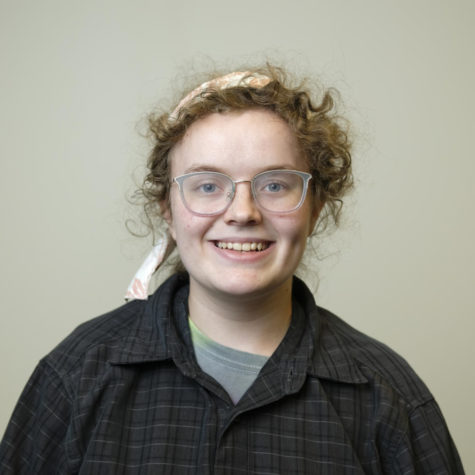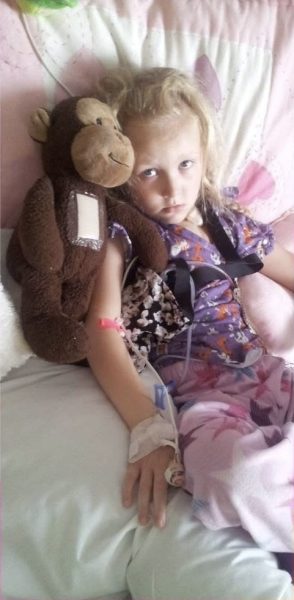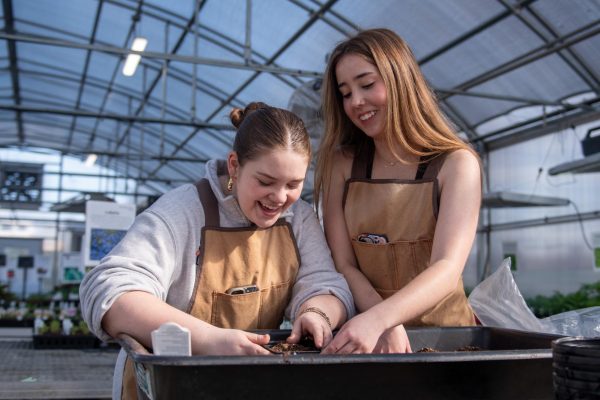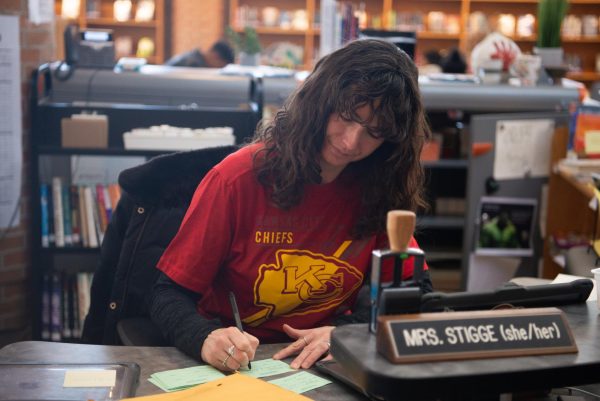All Your Computer’s a Stage
With the pandemic in full swing, performing arts students fight against limitations to make art
October 16, 2020
Silence is not something Choir teacher Cassie Banion is used to hearing in her class.
She can barely tell if the kids are warming up. All she can hear is her own voice echoing through the empty room while she plays the piano.
The story’s similar in the other performing arts classes. But as the arts are finally starting up, these programs face various challenges from music lag to video editing when trying to get their programs back to normalcy.
Day-to-Day school
Most choirs have yet to even touch a piece of music — and they’re already three weeks into the school year. It wasn’t until Sept. 28 that most choir kids got a hold of sheet music that was delivered to their houses.
Chamber choir was the only exception. They started with some sheet music they distributed online.
One of the bigger problems on Banion’s plate is getting feedback to her students.
“ just takes a little longer,” Banion said. “I’m not able to stand over you. I have to stress that you’re going to practice during the time that I’m giving you.”
Meanwhile, Orchestra has taken to this new environment more swiftly. All the classes are already looking at new pieces.
Orchestra teacher Britanny Wasko knows most of her students from teaching elementary orchestra. After tuning as a group, she has all the players break off into sections to work on the piece.
“Everybody’s on mute, except for one person,” Wasko said. “Sometimes it’s me that’s on mute. Sometimes it’s somebody else. We go through and practice in sections that way, so it’s usually less than 10 people per section. Everybody gets a chance to play.”
Theater teacher Jason Coats has decided to lean into the fact that nobody knows what they’re doing, to help develop the student’s creative problem solving that they’ll need in theater. While these skills make theater classes go smoother than most, this does not come without its sacrifices.
“It is a lot of fun with my theater classes because they’re so social by nature,” Coats said. “You lose a lot of that social nature of learning in a remote class, which is frustrating for pretty much every teacher that I talked to.”
Band is having the hardest time with virtual learning — as it’s particularly difficult for band members to make a transition to online. The kids just try and do what they can.
“All we can really do is — I can read something, I can play something myself,” Band teacher Ann Snead said. “We can also put on a recording of the music and have them follow along to the music. Just nothing else has been successful. We can’t put a metronome on and try to do it from there.”
Performances
Unlike their experience with online classes, the band is doing well with their newfound ability to play together.
On Sept. 28, band had their first Pep Band performance at the football game. To prepare for the game, they’d been practicing the music individually during class time. On Mondays, the chosen few for the game would practice together, outdoors and socially distanced. Snead considered this a huge relief.
“We pulled the kids together after school on Monday evenings two different times to try and put together what we rehearse in class,” Snead said. “That’s been wonderful. But then you realize when you get them together no matter how hard you work, there are just a lot of wrong things. Kids don’t always hear they’re making mistakes, so those rehearsals have helped us.”
Choir and orchestra both have a similar strategy when it comes to getting performances up and running — the idea for a virtual concert. There are quite a few different ways to edit together a virtual concert as Banion is considering working with KUGR. Wasko is trying to use a program called Cyborg Llama.
“ is a really weird name,” Wasko said. “But other orchestra teachers decided they wanted to make something that was going to make putting virtual performances together easier. The technology is still kind of clunky, but it works.”
Theater is also starting out its season with a mainstage play, “The Importance of Being Earnest,” and a lab play, “Bad Auditions on Camera.”
While the actors can still mostly do their parts on camera, the most difficult part of putting together a virtual show is going to be behind the scenes.
“I’m toying with lots of different ideas for visuals and for tech,” Coats said. “I’m going to use ‘The Importance of Being Earnest’ to kind of experiment with this. One of the things I’m looking to do is potentially purchase some collapsible green screens. Since we now have the ability to check out items and actually do virtual sets, there will be a set crew. They’ll be working in 2D, instead of in 3D.”
Sports vs Arts
One of the more polarizing subjects in the Northwest community is the district’s decision to let sports practice, but not the performing arts programs.
Each performing arts teacher has a different opinion on this. Wasko thinks that the orchestra is unable to practice in person because of its inability to practice outside, due to the fragility of the instruments. Banion isn’t fond of any activities practicing together for safety reasons.
“I recognize and understand the value of sports and athletics, as well as fine arts and performing arts,” Banion said. “I get why kids, parents and coaches want to be doing right now. I also want to be doing stuff right now. But the bottom line is, I don’t feel like it’s safe for anybody to be meeting in a large group, whether we’re inside or outside. While I do want to be rehearsing with my kids, I want to be safe about it.”
Coats is trying to keep a neutral stance, trying to only worry about what he can control. But it’s great for Snead as she can finally see her students again.
“It’s nice to have time for everybody,” Snead said. “It’s just nice to be able to get out of it to see people. It’s really difficult not to see them. If we could get together for that game with proper social distancing and get to see each other, that’s an immense relief.”
The first month
There hasn’t been a general consensus among the performing arts teachers on the quality of online school, but there’s one thing that they can all agree on — it’s great to see everyone and still get to make art.
“Even if it’s through a computer screen it’s really nice to see everybody,” Snead said. “We’ve all been in hibernation for six months. So, when you finally get to see people that you really, really love and care about, it’s really nice.”









